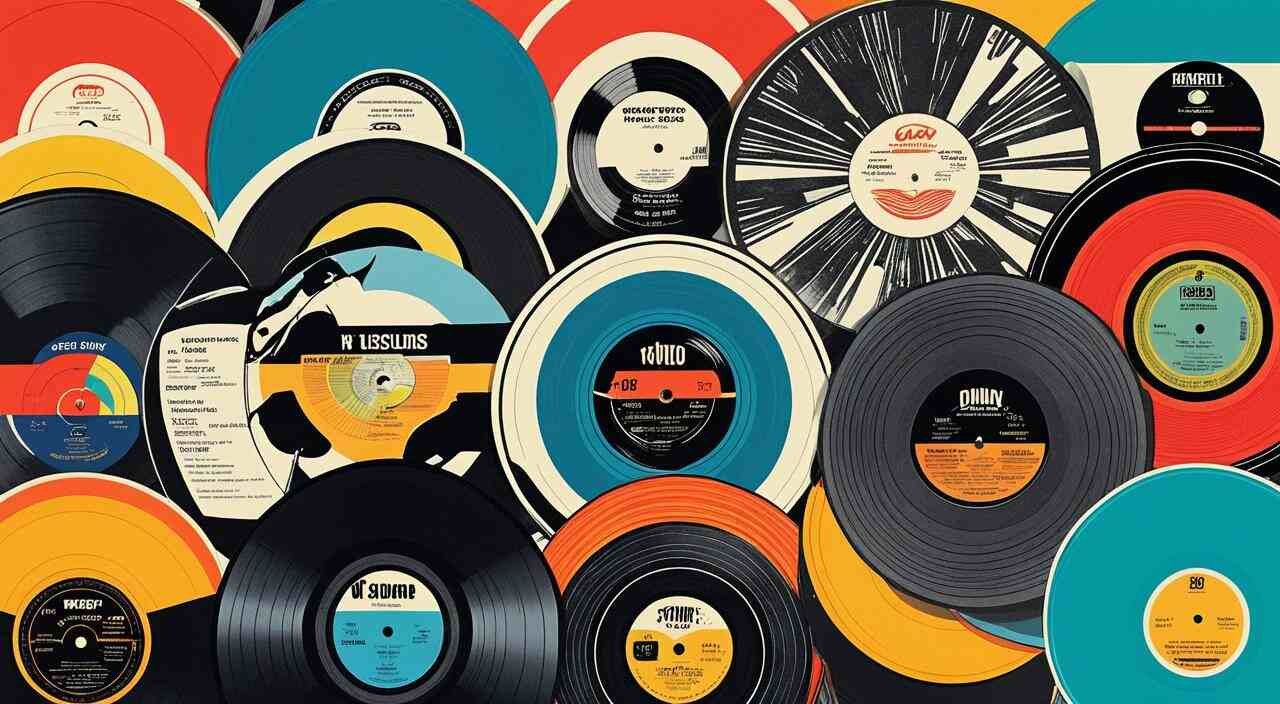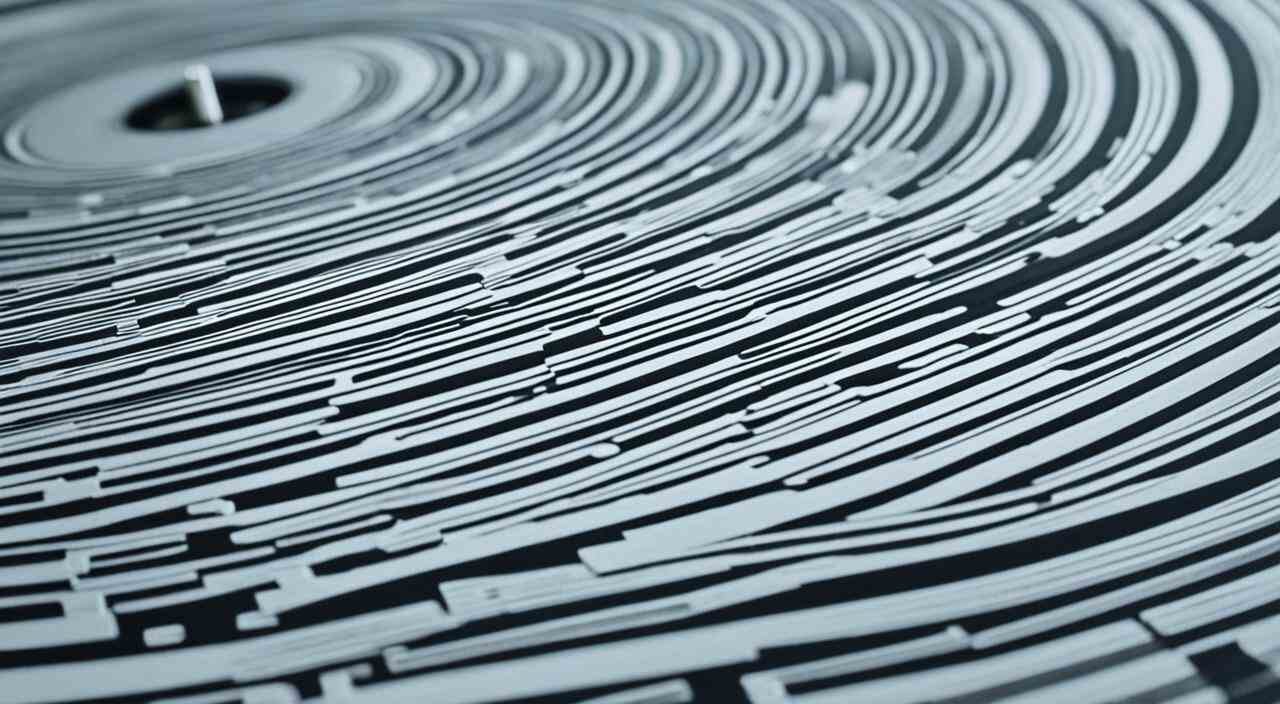Vinyl records have been a beloved music medium for decades, enchanting audiophiles with their warm sound and nostalgic appeal. But have you ever wondered what these vinyl treasures are actually made of? Let’s dive into the fascinating world of vinyl record composition and explore the materials that make up these iconic musical artifacts.
At the heart of every vinyl record lies a thermoplastic resin composed of copolymers of vinyl chloride (PVC) and vinyl acetate (PVA). This resin is the primary component, accounting for approximately 75% to 96% of the record’s weight. However, vinyl records are not solely made of this resin. They also contain a carefully balanced blend of additives that play a crucial role in the pressing process, playback quality, and overall longevity of the record.
The additives present in vinyl records can include heat stabilizers, lubricants, fillers, plasticizers, conditioners, and colorants. These additional substances, comprising around 4% to 25% of the record’s weight, are meticulously chosen and incorporated to enhance the record’s performance.
Key Takeaways:
- Vinyl records are primarily composed of a mixture of vinyl chloride and vinyl acetate.
- Additives such as heat stabilizers, lubricants, fillers, plasticizers, conditioners, and colorants are essential for the pressing and playback process.
- The specific composition of additives can vary among manufacturers.
- Understanding vinyl record composition provides insights into their durability and playback performance.
- Proper handling and preservation techniques are crucial to ensuring the longevity of vinyl records.
The Chemistry Behind Vinyl Records
A deeper understanding of vinyl records requires delving into the chemistry behind their composition. These records consist of a thermoplastic resin composed of copolymers of vinyl chloride (PVC) and vinyl acetate (PVA). While the resin makes up the majority of the record’s weight, several additives are incorporated to enhance various aspects of its performance.
Let’s take a closer look at the key chemistry elements involved:
1. Vinyl Resin Additives
Vinyl records contain a range of additives that optimize their functionality. These additives can vary in composition and proportion based on the desired performance and manufacturing processes of different record manufacturers.
2. Vinyl Stabilizers
During production, heat stabilizers are essential in protecting the record from degradation caused by the release of hydrochloric acid (HCl) gas at high temperatures.
3. Vinyl Lubricants
Lubricants are incorporated into the resin mix to improve the flow of the vinyl and aid in its release from the stampers during the pressing process.
4. Vinyl Fillers
Fillers can be included in the vinyl composition to reduce costs and enhance wear resistance. However, the presence of fillers may result in increased background noise during playback.
5. Vinyl Plasticizers
Plasticizers play a vital role in enhancing the flexibility and durability of vinyl records. They allow the record to withstand repeated playing without becoming brittle.
6. Vinyl Conditioners
Conditioners contribute to surface lubrication, static control, and resistance to microbial contamination. These additives ensure the record remains in optimal condition over time.
7. Vinyl Colorants
Colorants are added to facilitate the observation of surface defects and provide variation in the visual appearance of the vinyl records.
The specific types and proportions of these additives can differ among manufacturers, resulting in distinctions in the characteristics and performance of vinyl records.
To illustrate the chemistry behind vinyl records, take a look at the diagram below:
Conclusion
In conclusion, the vinyl record manufacturing process is a meticulous and intricate one. From cutting the master disc to pressing the record using PVC pellets, every step is crucial in creating high-quality vinyl records. However, the journey doesn’t end there. Proper handling is essential to prevent any scratches or damage, ensuring the longevity of these cherished music artifacts.
Vinyl record preservation is of utmost importance for collectors and enthusiasts. Understanding the composition of vinyl records and taking appropriate measures can help prevent degradation. Storing records in acid-free sleeves can protect them from environmental factors that could impact their quality over time.
Vinyl record cleaning should be approached with caution, using gentle methods and avoiding harsh solvents. The additives that contribute to the record’s performance and longevity can be dissolved by strong chemicals, potentially causing irreversible damage. By adopting proper cleaning techniques, vinyl record owners can enjoy optimal playback performance and extend the lifespan of their cherished collections.
FAQ
What are vinyl records made of?
Vinyl records are primarily composed of a thermoplastic resin that is a mixture of copolymers of vinyl chloride (PVC) and vinyl acetate (PVA).
What additives are used in vinyl records?
Vinyl records contain various additives such as heat stabilizers, lubricants, fillers, plasticizers, conditioners, and colorants.
Why are heat stabilizers necessary in vinyl records?
Heat stabilizers protect the record during production and prevent degradation caused by the release of HCl gas at high temperatures.
What role do lubricants play in vinyl records?
Lubricants aid in the flow of the resin and help with the release of the record from the stampers.
Are fillers included in vinyl records?
Yes, fillers can be added to reduce costs and improve wear resistance, although they may increase background noise.
How do plasticizers contribute to vinyl records?
Plasticizers enhance the flexibility and durability of vinyl records.
What do conditioners do in vinyl records?
Conditioners provide surface lubrication, static control, and resistance to microbial contamination in vinyl records.
Why are colorants added to vinyl records?
Colorants are added to facilitate the observation of surface defects on vinyl records.
How are vinyl records manufactured?
Vinyl records are manufactured through a process involving cutting the master disc, plating the disc to create stampers, and pressing the record using PVC pellets.
How should vinyl records be handled and preserved?
Vinyl records should be handled with care to avoid damage. Storing them in acid-free record sleeves and cleaning them cautiously can help prevent degradation.









Leave a Reply